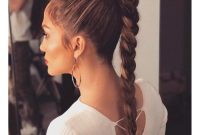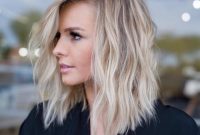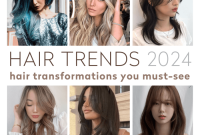The pursuit of healthy, radiant hair can be hindered by the detrimental effects of environmental stressors, chemical treatments, and improper hair care practices. Dry and damaged hair, characterized by its brittle texture, split ends, and lack of luster, requires specialized care and attention to restore its vitality.
Embark on a journey of hair rejuvenation as we delve into the causes, science, and effective remedies for dry and damaged hair.
Understanding the underlying mechanisms behind dry and damaged hair empowers us to implement targeted solutions. By delving into the structure of hair and the role of natural oils, we gain insights into the impact of dryness and damage on hair proteins.
This knowledge equips us with the tools to combat hair woes and promote long-term hair health.
Hair Care for Dry and Damaged Hair

Dry and damaged hair is a common problem that can be caused by a variety of factors, including environmental factors, chemical treatments, and improper hair care practices. Dry and damaged hair can be difficult to manage and style, and it can also be more prone to breakage and split ends.
There are a number of things you can do to prevent and treat dry and damaged hair. Some of the most important things include:
Using Gentle Shampoos and Conditioners
Harsh shampoos and conditioners can strip your hair of its natural oils, leaving it dry and brittle. Look for shampoos and conditioners that are designed for dry or damaged hair. These products will typically contain ingredients that help to moisturize and condition your hair, without weighing it down.
Avoiding Excessive Heat Styling
Heat styling can damage your hair, especially if you use high heat settings or style your hair frequently. If you must use heat styling tools, be sure to use a heat protectant spray to help protect your hair from damage.
Protecting Hair from the Sun
The sun’s UV rays can damage your hair, causing it to become dry and brittle. Be sure to protect your hair from the sun by wearing a hat or scarf when you are outdoors. You can also use a leave-in conditioner or hair oil that contains UV protection.
Understanding the Science Behind Dry and Damaged Hair

Dry and damaged hair is a common problem that can affect people of all ages. Understanding the science behind this condition can help you take steps to prevent and treat it.
Hair Structure and Its Impact on Dryness and Damage
Hair is made up of three layers: the cuticle, the cortex, and the medulla. The cuticle is the outermost layer and is responsible for protecting the hair shaft. The cortex is the middle layer and contains the hair’s pigment, or color.
The medulla is the innermost layer and is made up of loosely packed cells.
When hair is healthy, the cuticle is smooth and the cortex is strong. This allows the hair to reflect light and appear shiny and healthy. However, when hair is dry or damaged, the cuticle can become rough and the cortex can weaken.
This can lead to hair that is dull, brittle, and prone to breakage.
Role of Natural Oils in Hair Health
Natural oils play an important role in hair health. These oils help to keep the hair moisturized and protected from damage. When the scalp produces enough natural oils, the hair is less likely to become dry and damaged.
However, a number of factors can lead to a lack of natural oils in the hair, including:
- Frequent washing
- Using harsh shampoos and conditioners
- Heat styling
- Chemical treatments
- Environmental factors, such as sun exposure and wind
When the hair lacks natural oils, it becomes dry and brittle. This can lead to a number of problems, including split ends, breakage, and hair loss.
Impact of Damage on Hair Proteins
Hair proteins, such as keratin, play an important role in hair strength and elasticity. When hair is damaged, these proteins can be broken down, which can lead to hair that is weak and prone to breakage.
There are a number of factors that can damage hair proteins, including:
- Heat styling
- Chemical treatments
- Environmental factors, such as sun exposure and wind
- Mechanical damage, such as brushing or combing hair too roughly
When hair proteins are damaged, the hair can become weak, brittle, and prone to breakage.
Hair Care Regimen for Dry and Damaged Hair
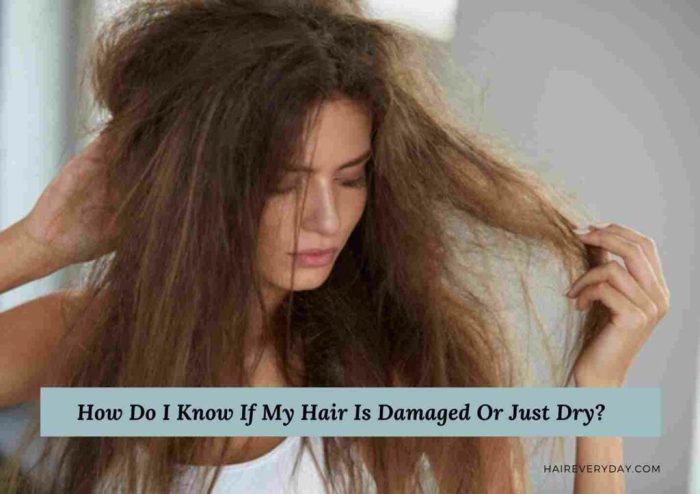
Dry and damaged hair requires a specialized hair care routine to restore its health and vibrancy. This involves gentle cleansing, deep conditioning, and protective styling practices. Using products specifically designed for dry and damaged hair can significantly improve its texture, reduce breakage, and promote overall hair health.
Shampooing
Choose a moisturizing shampoo that gently cleanses without stripping away natural oils. Avoid harsh shampoos containing sulfates, parabens, and alcohol, as these can further dry out the hair. Apply a small amount of shampoo to wet hair, massage it into a lather, and rinse thoroughly.
Conditioning
Deep conditioning is essential for dry and damaged hair. Use a deep conditioner at least once a week, or more often if your hair is severely damaged. Apply the conditioner to clean, damp hair, and leave it in for the recommended time specified on the product label.
Rinse thoroughly.
Styling
When styling dry and damaged hair, it’s important to avoid heat styling tools as much as possible. If you must use heat, apply a heat protectant spray to your hair before styling. Use a wide-tooth comb to detangle hair gently, starting from the ends and working your way up to the roots.
Avoid brushing dry hair, as this can cause breakage.
Specialized Products
There are several specialized products available for dry and damaged hair that can help improve its condition. These products often contain ingredients that help to moisturize, repair, and protect the hair. Some examples include:
- Moisturizing shampoos: These shampoos contain ingredients that help to hydrate and nourish dry hair.
- Deep conditioners: Deep conditioners provide intense hydration and nourishment to dry and damaged hair.
- Leave-in treatments: Leave-in treatments are applied to damp hair after washing and are left in without rinsing. They help to moisturize and protect the hair from environmental damage.
Detangling Dry and Damaged Hair
Detangling dry and damaged hair can be challenging, but it’s important to do so gently to avoid further damage. Use a wide-tooth comb or detangling brush, and start from the ends of your hair, working your way up to the roots.
Apply a detangling spray or leave-in conditioner to help loosen knots and tangles.
Natural Remedies and DIY Treatments for Dry and Damaged Hair
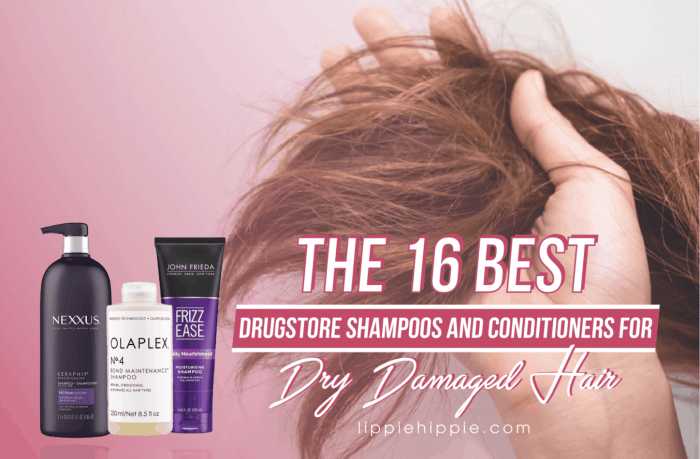
Harnessing the power of nature, DIY hair masks and treatments can effectively revitalize dry and damaged hair. These natural remedies offer a gentle and cost-effective alternative to commercial products, often utilizing ingredients readily available in your kitchen.
Natural Ingredients for Hair Repair and Moisture
Nature’s bounty provides an array of ingredients with remarkable hair-repairing and moisturizing properties:
- Coconut Oil: Renowned for its deep-conditioning abilities, coconut oil penetrates hair shafts, replenishing lost moisture and reducing protein loss.
- Argan Oil: Abundant in antioxidants and fatty acids, argan oil combats dryness, tames frizz, and restores hair’s natural shine.
- Aloe Vera: This soothing succulent possesses anti-inflammatory and moisturizing properties, promoting scalp health and alleviating dryness.
- Avocado: Rich in vitamins and healthy fats, avocado deeply nourishes hair, promoting growth and reducing breakage.
- Honey: A humectant and emollient, honey attracts and retains moisture, leaving hair soft and manageable.
- Eggs: Packed with protein, eggs help repair damaged hair cuticles, strengthening and protecting hair strands.
DIY Hair Masks and Treatments
Craft your own hair-rejuvenating treatments using these natural ingredients:
- Coconut Oil Hair Mask: Massage coconut oil into dry hair, focusing on the ends. Leave on for 30 minutes to an hour, then wash and condition as usual.
- Argan Oil Leave-In Conditioner: Apply a few drops of argan oil to damp hair, concentrating on the ends. Leave in and style as desired.
- Aloe Vera Gel Mask: Extract fresh aloe vera gel and apply it to your scalp and hair. Leave on for 30 minutes, then rinse thoroughly.
- Avocado and Honey Hair Mask: Blend avocado with honey until smooth. Apply to hair, covering from root to tip. Leave on for 30 minutes, then wash and condition.
- Egg and Yogurt Hair Mask: Whisk together an egg and plain yogurt. Apply to hair, focusing on the ends. Leave on for 30 minutes, then wash and condition.
Benefits and Limitations of Natural Remedies
While natural remedies offer several advantages, it’s essential to consider their limitations:
- Effectiveness: Natural remedies may not be as potent as commercial products, and results may vary depending on hair type and damage severity.
- Consistency: DIY treatments require regular use to maintain results, unlike some commercial products that offer long-lasting effects.
- Time Commitment: Preparing and applying DIY treatments can be time-consuming compared to using store-bought products.
Despite these limitations, natural remedies remain a popular choice for those seeking a gentle and cost-effective approach to hair care.
Salon Treatments for Dry and Damaged Hair

Dry and damaged hair can benefit from a range of salon treatments designed to repair, restore, and revitalize the hair.
Keratin Treatments
Keratin treatments are a popular choice for dry and damaged hair. These treatments involve applying a keratin-based solution to the hair, which helps to fill in gaps in the hair shaft, smooth the cuticle, and reduce frizz. Keratin treatments can last for several months, providing long-lasting results.
Benefits of Keratin Treatments:
- Smooths and detangles hair
- Reduces frizz and flyaways
- Adds shine and luster
- Strengthens hair and reduces breakage
Potential Drawbacks of Keratin Treatments:
- Can be expensive
- May cause hair to become temporarily stiff or brittle
- Not suitable for all hair types
Deep Conditioning Treatments
Deep conditioning treatments are another effective option for dry and damaged hair. These treatments involve applying a deep conditioner to the hair, which is left on for a period of time to allow the conditioner to penetrate the hair shaft and repair damage.
Benefits of Deep Conditioning Treatments:
- Moisturizes and nourishes dry hair
- Repairs damage and split ends
- Softens and detangles hair
- Adds shine and luster
Potential Drawbacks of Deep Conditioning Treatments:
- Can be time-consuming
- May weigh down fine hair
- Not as long-lasting as other treatments
Hot Oil Treatments
Hot oil treatments are a traditional remedy for dry and damaged hair. These treatments involve applying a heated oil, such as coconut oil or olive oil, to the hair, which helps to penetrate the hair shaft and repair damage.
Benefits of Hot Oil Treatments:
- Moisturizes and nourishes dry hair
- Repairs damage and split ends
- Softens and detangles hair
- Adds shine and luster
Potential Drawbacks of Hot Oil Treatments:
- Can be messy
- May weigh down fine hair
- Not as long-lasting as other treatments
Choosing the Right Salon Treatment:
The best salon treatment for dry and damaged hair will depend on the individual’s needs and hair type. Keratin treatments are a good option for those looking for long-lasting results, while deep conditioning treatments and hot oil treatments are good options for those looking for a more affordable and natural approach.
Protective Hairstyles for Dry and Damaged Hair
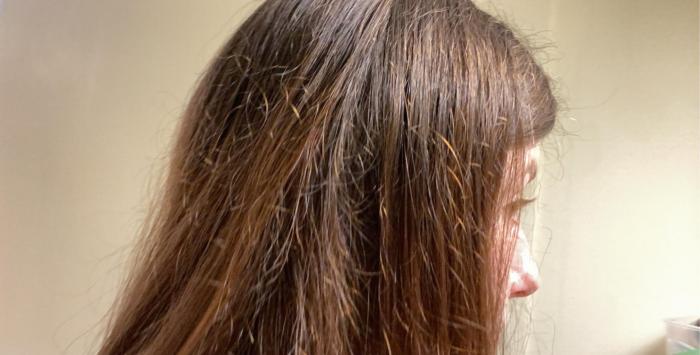
Dry and damaged hair is more prone to breakage and split ends. Protective hairstyles can help to minimize further damage and promote hair growth by reducing friction and tangles.
Benefits of Protective Hairstyles
- Reduced Breakage: Protective hairstyles keep hair strands close to the scalp, reducing the risk of breakage caused by wind, brushing, or styling.
- Promotes Hair Growth: Protective hairstyles can help to promote hair growth by reducing stress on the hair follicles and allowing the hair to grow undisturbed.
- Moisturizes Hair: Protective hairstyles can help to keep hair moisturized by preventing the hair from losing moisture to the environment.
- Prevents Split Ends: Protective hairstyles can help to prevent split ends by keeping the hair strands from rubbing against each other.
Types of Protective Hairstyles
- Braids: Braids are a classic protective hairstyle that can be worn in a variety of ways. They are easy to style and can be dressed up or down.
- Buns: Buns are another popular protective hairstyle that can be worn in a variety of ways. They are easy to style and can be worn for both casual and formal occasions.
- Twists: Twists are a protective hairstyle that is similar to braids, but they are made with two strands of hair instead of three. Twists are easy to style and can be worn in a variety of ways.
- Locs: Locs are a protective hairstyle that is created by allowing the hair to mat and form dreadlocks. Locs can be worn in a variety of ways and can be styled to create a variety of looks.
Tips for Styling Dry and Damaged Hair
- Avoid Tight Hairstyles: Tight hairstyles can put stress on the hair and lead to breakage. When styling dry and damaged hair, it is important to avoid tight hairstyles such as cornrows, tight buns, or ponytails.
- Use Gentle Hair Accessories: When styling dry and damaged hair, it is important to use gentle hair accessories such as soft scrunchies or hair ties. Avoid using metal hair accessories, as they can damage the hair.
- Use Heat Protectant: When using heat styling tools on dry and damaged hair, it is important to use a heat protectant spray to help protect the hair from damage.
- Moisturize Regularly: Dry and damaged hair needs regular moisture to stay healthy. Use a leave-in conditioner or hair oil to help keep the hair moisturized.
Long-Term Hair Care Strategies for Dry and Damaged Hair
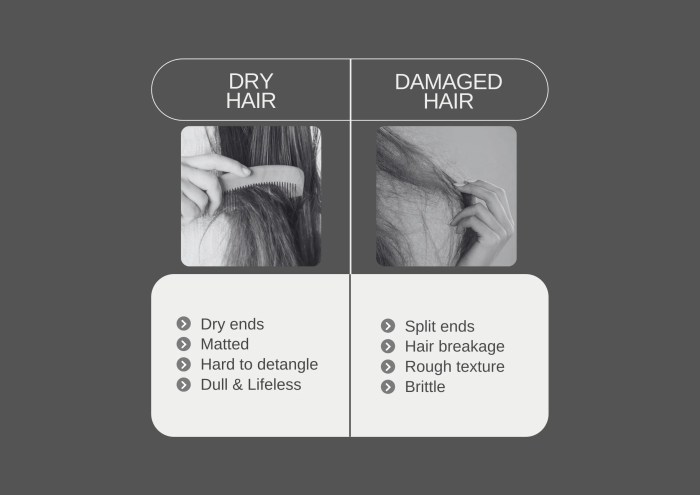
Achieving healthy, vibrant hair requires more than just temporary damage repair; it demands a consistent and proactive approach to hair care. This section explores long-term strategies for maintaining healthy hair, preventing future damage, and promoting overall hair wellness.
The Significance of Consistent Hair Care Practices
Once dry and damaged hair has been restored to health, it’s crucial to maintain a consistent hair care regimen to prevent regression and ensure long-term hair health. This includes:
- Regular Washing: Wash your hair as needed, using a gentle, sulfate-free shampoo and conditioner suitable for your hair type.
- Deep Conditioning: Incorporate deep conditioning treatments into your routine to provide intense hydration and nourishment to your hair.
- Detangling with Care: Use a wide-toothed comb or detangling brush to gently remove knots, starting from the ends and working your way up.
- Avoid Heat Styling: Minimize the use of heat styling tools, and when necessary, apply a heat protectant spray to shield your hair from damage.
- Protective Hairstyles: Opt for protective hairstyles, such as braids, buns, or twists, to minimize friction and reduce breakage.
Diet and Lifestyle Factors for Hair Health
In addition to external hair care practices, your diet and lifestyle play a significant role in promoting hair health:
- Balanced Diet: Consume a well-balanced diet rich in essential vitamins, minerals, and antioxidants to nourish your hair from within.
- Hydration: Maintain adequate hydration by drinking plenty of water to support overall hair health and prevent dryness.
- Stress Management: Manage stress levels through techniques like meditation, exercise, or yoga, as stress can contribute to hair problems.
Preventing Future Hair Damage
To prevent future damage to your hair, consider the following tips:
- Avoid Harsh Chemicals: Steer clear of harsh chemicals, such as those found in some hair dyes, relaxers, and styling products, which can strip your hair of its natural oils and cause damage.
- Use Heat Protectants: When using heat styling tools, apply a heat protectant spray to create a barrier between your hair and the heat, reducing the risk of damage.
- Get Regular Trims: Schedule regular trims to remove split ends and prevent further breakage, allowing your hair to grow healthily.
Last Word
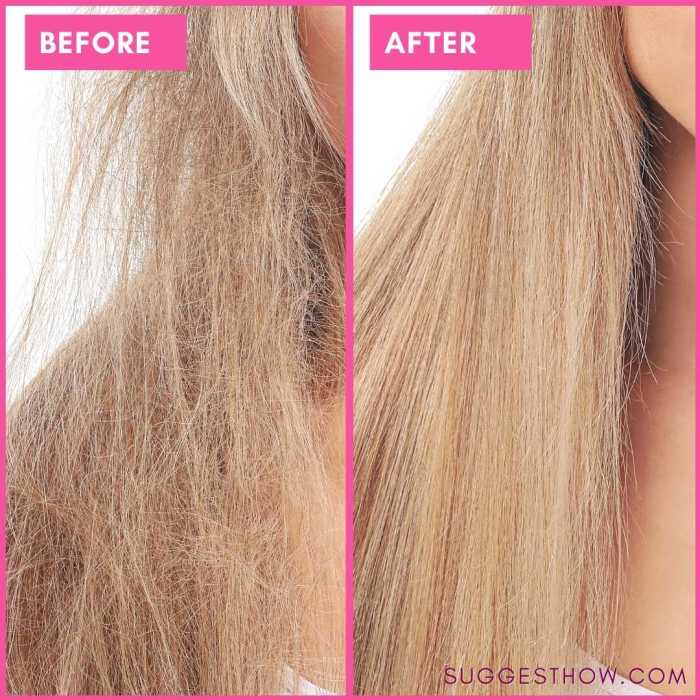
The journey to revitalize dry and damaged hair requires a holistic approach, encompassing hair care routines, natural remedies, salon treatments, protective hairstyles, and long-term hair care strategies. By adopting these practices, we can transform dry and damaged hair into a thing of the past, revealing healthy, resilient locks that radiate with vibrancy and shine.
FAQ Summary
Q: What are the common causes of dry and damaged hair?
A: Dry and damaged hair can result from various factors, including environmental stressors like sun exposure and harsh weather, chemical treatments such as bleaching and coloring, and improper hair care practices like excessive heat styling and harsh shampoos.
Q: How can I prevent dry and damaged hair?
A: Prevention is key to maintaining healthy hair. Opt for gentle shampoos and conditioners, avoid excessive heat styling, protect hair from the sun, and maintain a balanced diet rich in vitamins and minerals.
Q: What are some natural remedies for dry and damaged hair?
A: Nature’s bounty offers several remedies for dry and damaged hair. Coconut oil, argan oil, and aloe vera are natural moisturizers that can help restore hair’s health. DIY hair masks and treatments using these ingredients can provide deep conditioning and nourishment.
Q: What are some salon treatments for dry and damaged hair?
A: Salon treatments offer professional solutions for dry and damaged hair. Keratin treatments, deep conditioning treatments, and hot oil treatments are popular options that aim to repair and restore hair’s strength and elasticity.
Q: How can I protect my hair from further damage?
A: Protective hairstyles like braids, buns, and twists can minimize friction and reduce breakage. Avoiding tight hairstyles, using gentle hair accessories, and applying heat protectants before styling can also help prevent further damage.

